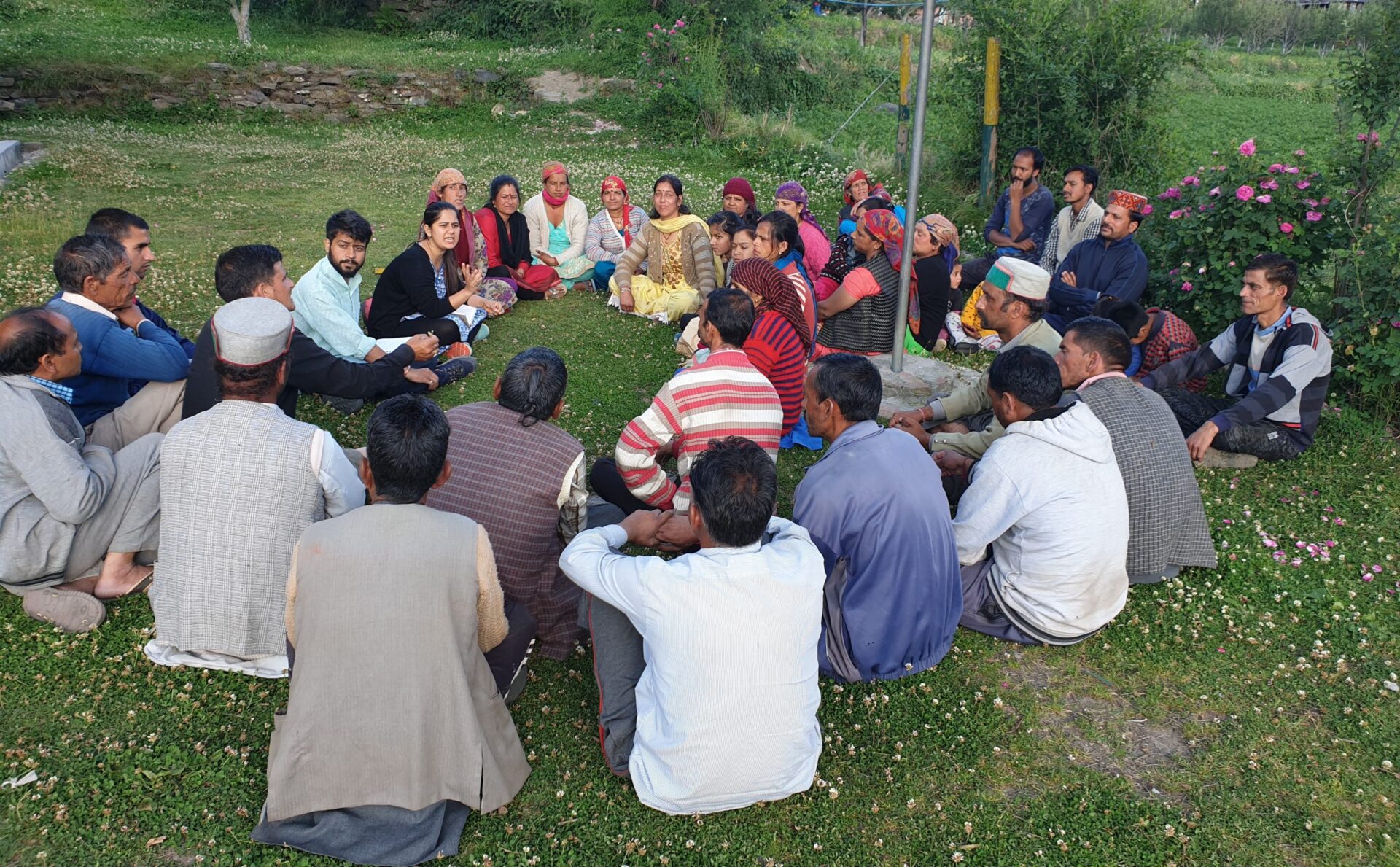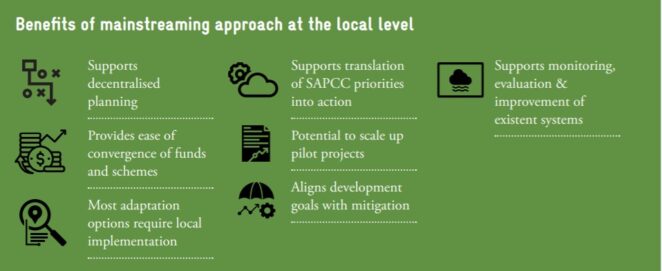Article /
Accelerating Adaptation: State Action Plans on Climate Change as driver of mainstreaming climate change into development planning

Introduction
The formulation of State Action Plans on Climate Change (SAPCCs) has been an important milestone in developing domestic policies around climate change in India. SAPCCs are fundamental to decentralising adaptation and leveraging climate change actions at the sub-national level.
However, the implementation of SAPCCs has been a challenge due to lack of dedicated funding and the challenge of adapting existent investments and efforts to climate change impacts. Notwithstanding, several pilots and demonstration projects which are in line with SAPCC priorities have been implemented, with funds from designated agencies and the central government under the National Adaptation Fund on Climate Change. In 2019, the Ministry of Environment Forests and Climate Change developed guidelines for the revision of SAPCCs for all Indian states, in light of new climate science and projections, and in alignment with commitments under the NDC. The guidelines highlight the importance of mainstreaming adaptation and utilising existing budgetary allocations of state governments through a participatory process between sectors in order to outlast the impacts of climate change.
As part of the Indo-German Technical Cooperation Project “Climate Change Adaptation in Rural Areas of India (CCA-RAI), GIZ and its partner organisation have demonstrated mainstreaming approaches at the local level to support SAPCC implementation. The following brief presents five key pillars for successful mainstreaming, synthesized from various interventions the researches did in four Indian states over five years.
*Download the full article from the right-hand column.
5 Key Pillars of Successful Mainstreaming
Mainstreaming can have multiple approaches and entry points. Apart from access to climate information and services, mainstreaming on the ground requires coordination among multiple stakeholders and processes, including government and private institutions. Identifying the right approach is essential for leveraging finance for climate adaptation and meeting sustainable development goals.
Evidence-based planning
Measures must be based on reliable and scientifically sound evidence on climate change impact in a particular region. It is important to look at climate in smaller regions and not just annual averages, and seasonal variations in rainfall, number of rainy days and number of dry days. Analyse data in smaller administrative areas, like at the Panchayat level, before scaling it up to the district level. Decentralised planning and participation of local communities, including traditional knowledge and perceptions, are crucial to improve adaptation interventions and curb climate impacts. Portals such as www.climatevulnerability.in provide easy-to-understand information about future climate scenarios and associated risks, which can be used by a wide range of stakeholders.

Identifying entry points in existing policies or schemes
For mainstreaming to work, climate change interventions need an entry point, in an existing development policy or scheme in a relevant thematic area/sector where they can be incorporated.To start with, it would be helpful to tag a prioritised adaptation intervention to a specific sector such as agriculture, water, or rural infrastructure. Such mapping provides a strategic direction and umbrella for ground-level activities, as well as helps leverage funding for adaptation interventions.
Engaging local communities
To maximise the benefits of mainstreaming, local communities, women and marginalised groups need to be engaged. Unfortunately, access to useful climate information and the capacity to understand climate data is often limited. Non-governmental and community-based organizations play a crucial role in bringing the right information to the local government bodies and communities. They also play an important role in assessing climate vulnerability and local impacts through a bottom-up approach. Engaging with the gram sabha or village council members helps in identifying and prioritising adaptation interventions and planning at the local level.
Capacity building and knowledge networking
SAPCCs provide a combined view of sustainable development and climate change, merging science, public finance and governance. Capacity building is essential for an effective mainstreaming process. It must include identifying climate risks, implementing adaptation measures, monitoring and evaluation. Capacity building needs to cover all aspects of the administration horizontally, and all levels of the governance machinery vertically. Stakeholders include policymakers, state officials, district officers, panchayat and village council members, non-government organizations, and vulnerable groups. Creating a cross-sectoral network of agencies and stakeholders can optimise resource allocation, and streamline scientific expertise and local knowledge towards achieving both SAPCC and Sustainable Development Goals.
Leadership and key stakeholders
In this process it is also important to identify and define the key stakeholders and develop champions/leaders amongst government, civil society, academia or politics. They play a key role in influencing policy decision, find solutions to problems. Their involvement and the use of their expertise tied in with the SAPCCs will create the network necessary for mainstreaming of adaptation efforts. Ideally, “champions” are members of the state steering committee, or they support it with advice and information.
Lessons Learnt
One of the overarching goals of India’s National Action Plan on Climate Change and NDC for adaptation is to achieve development goals by mainstreaming adaptation into development. In this regard, SAPCCs serve as a key policy framework half-way between the national-level goals and realities on the ground. This makes SAPCCs relevant for achieving the overall goals and targets at the national level while decentralizing the efforts to districts and villages. Once the current process of revising the SAPCCs is accomplished, renewed efforts must be made to downscale the SAPCC to the district level. The localization of SAPCCs to the district level will offer a roadmap for state and national programs and will provide an entry point for strengthening decentralized climate governance. For efficient localization, continued cross-sectoral coordination, stakeholder engagement and capacity building both horizontally and vertically across all levels of governance will ensure the implementation of SAPCCs in an inclusive and participatory manner.
There is no one-size-fits-all approach to adaptation planning.Our experience of working on implementing India’s SAPCCs at the local level has shown the number of benefits (see figure below) of supporting decentralized planning and community participation, by easing the convergence of funds for various sectoral schemes/programs and providing co-benefits with developmental goals.

Suggested citation
Awasthi, K., S. Bhatt and N. Madan (2020). Accelerating Adaptation: State Action Plans on Climate Change as driver of mainstreaming climate change into development planning. Deutsche Gesellschaft für Internationale Zusammenarbeit (GIZ) GmbH.
Further readings
Related resources
- Climate Change Adaptation in Rural Areas of India (CCA RAI)
- Mainstreaming Gender in Climate Change in India
- Climate Risk Management Framework for India: Addressing Loss and Damage (L&D)
- From Margins to Mainstream? State Climate Change Planning in India as a 'Door Opener' to a Sustainable Future
- Policy brief: How do gender approaches improve climate compatible development? Lessons from India
